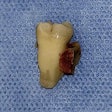Dear Anesthesia & Pain Management Insider,
Do you understand the drug interactions that may impair the effectiveness of sedation in special needs patients? Do you know how the medications a patient is taking might interact with propofol, and how this changes your treatment strategy? The findings from a study by Japanese researchers will help you ask the right questions when treating these, and other, patients. Find out more in the Insider Exclusive.
Also in our Anesthesia & Pain Management Community, the authors of a study presented at the recent International Association for Dental Research (IADR) 2015 General Session in Boston reported that dentists overestimate patients' anxiety about dental treatment but underestimate their desire for sedation and general anesthesia. Read more here.
Swiss researchers have linked dental pain relief with changes in activity and connectivity in certain parts of the brain, suggesting a distinct role for these brain regions in alleviating dental pain. They also presented their study findings at the IADR meeting.
And in a poster presentation from the meeting, a group from Italy showed how a new computer-controlled local anesthesia delivery system resulted in low patient pain ratings during injection procedures. In addition, patients were willing to pay an additional fee for painless anesthesia, the researchers found.
Patients with certain characteristics are more likely to experience severe pain after root canal therapy, according to a new study in the Journal of Dental Research. Practitioners may be able to use these pretreatment predictors to better recommend pain management strategies for their patients at risk for severe postoperative pain. Read Assistant Editor Theresa Pablo's article here.
For the latest feature articles and news in brief on anesthesia and pain management, please visit the community at pain.drbicuspid.com.



















